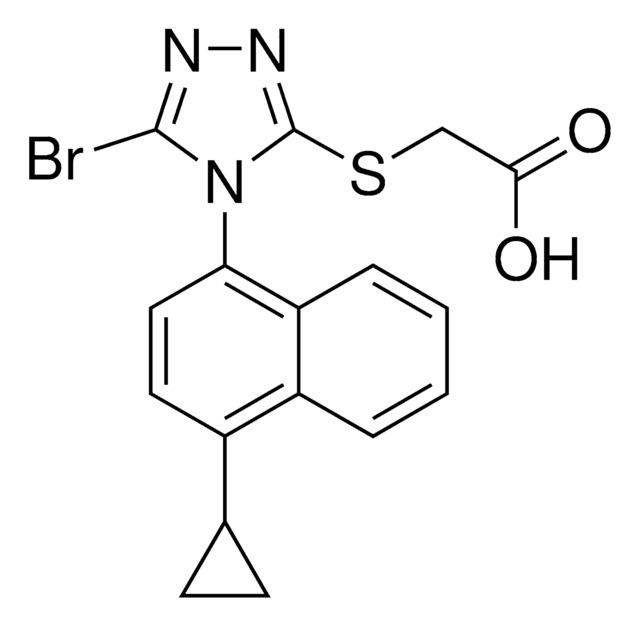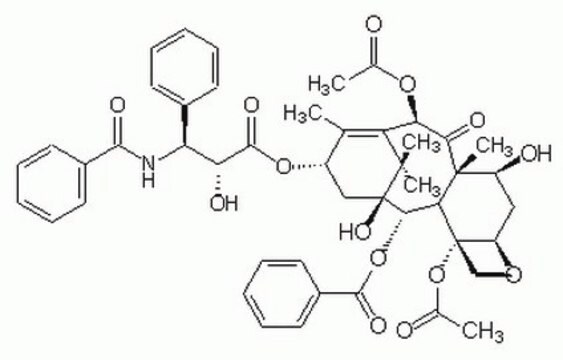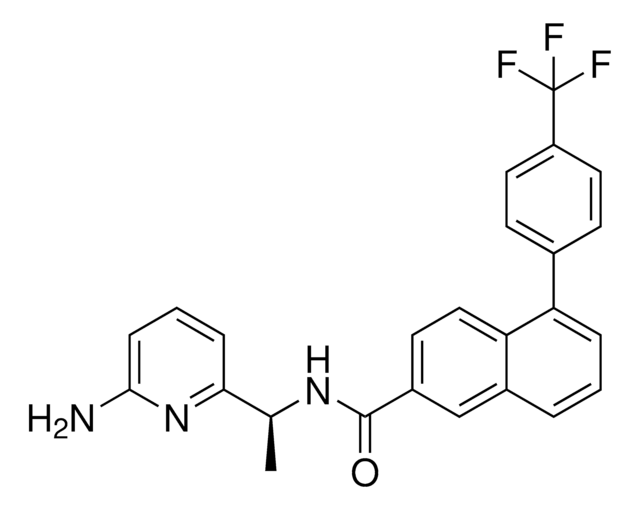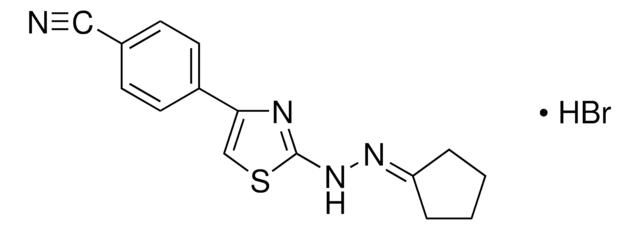推荐产品
化驗
≥97% (HPLC)
形狀
powder
顏色
white to beige
溶解度
DMSO: 2 mg/mL, clear
儲存溫度
−20°C
生化/生理作用
CA3 is a potent and selective inhibitor of YAP1 (Hippo co-activator Yes-associated protein 1) that inhibits YAP1 expression and transcriptional activity in esophageal adenocarcinoma (EAC) cell lines. CA3 potently inhibits growth, induces apoptosis in radiation resistant CSC (cancer stem cell) enriched EAC cells. It inhibits tumor growth of in xenograft model with no apparent toxicity.
儲存類別代碼
11 - Combustible Solids
水污染物質分類(WGK)
WGK 3
閃點(°F)
Not applicable
閃點(°C)
Not applicable
Shumei Song et al.
Molecular cancer therapeutics, 17(2), 443-454 (2017-11-24)
Mounting evidence suggests that the Hippo coactivator Yes-associated protein 1 (YAP1) is a major mediator of cancer stem cell (CSC) properties, tumor progression, and therapy resistance as well as often a terminal node of many oncogenic pathways. Thus, targeting YAP1
Xiao Qin et al.
Cell, 186(25), 5554-5568 (2023-12-09)
Cancer cells are regulated by oncogenic mutations and microenvironmental signals, yet these processes are often studied separately. To functionally map how cell-intrinsic and cell-extrinsic cues co-regulate cell fate, we performed a systematic single-cell analysis of 1,107 colonic organoid cultures regulated
Siyuan Hao et al.
iScience, 27(6), 109927-109927 (2024-05-24)
YAP/TEAD signaling is essential for organismal development, cell proliferation, and cancer progression. As a transcriptional coactivator, how YAP activates its downstream target genes is incompletely understood. YAP forms biomolecular condensates in response to hyperosmotic stress, concentrating transcription-related factors to activate
Sina Stern et al.
Neuron, 109(21), 3436-3455 (2021-09-12)
An inhibitory extracellular milieu and neuron-intrinsic processes prevent axons from regenerating in the adult central nervous system (CNS). Here we show how the two aspects are interwoven. Genetic loss-of-function experiments determine that the small GTPase RhoA relays extracellular inhibitory signals
我们的科学家团队拥有各种研究领域经验,包括生命科学、材料科学、化学合成、色谱、分析及许多其他领域.
联系技术服务部门








